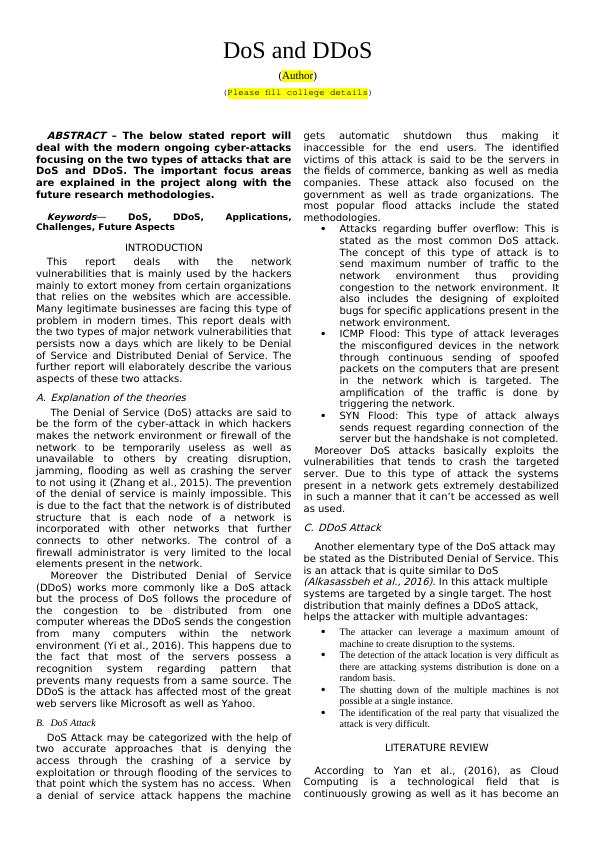DoS and DDoS: Modern Cyber-Attacks and Future Research
Provide a complete report on denial of service and distributed denial of service attacks, including an overview of the technology involved, relevant technologies and applications, challenges/problems, identification of gaps in the literature, and future research directions.
3 Pages2615 Words42 Views
Added on 2022-12-29
About This Document
This report discusses the modern cyber-attacks of DoS and DDoS, their impact on organizations, and future research directions for detection and mitigation.
DoS and DDoS: Modern Cyber-Attacks and Future Research
Provide a complete report on denial of service and distributed denial of service attacks, including an overview of the technology involved, relevant technologies and applications, challenges/problems, identification of gaps in the literature, and future research directions.
Added on 2022-12-29
ShareRelated Documents
End of preview
Want to access all the pages? Upload your documents or become a member.
Computer Security: Understanding Distributed Denial of Service Attack
|13
|2230
|463
IT Security: Types of Risks, Organizational Procedures, Impact of Firewall Configuration, Implementation of DMZ, Static IP and NAT
|18
|1181
|61
Distributed Denial of Service (DDoS) Attack: An Overview and Real World Example
|10
|2158
|245
Hackers Without Borders: A Legal Response
|11
|2715
|251
Denial of Service and Distributed Denial of Service Attacks
|4
|586
|366
Network System Attacks Course 2022
|7
|1310
|21

